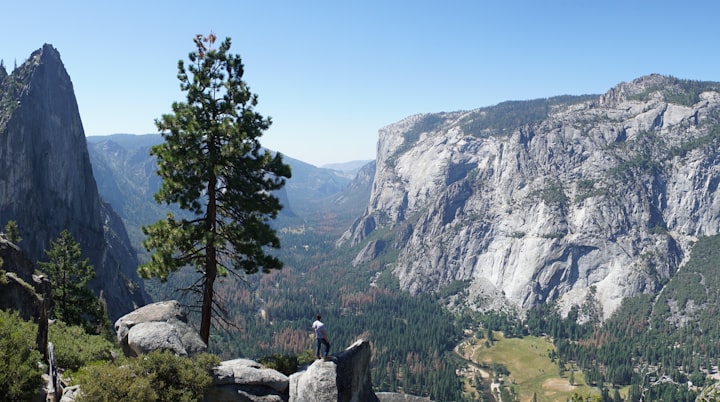The Indus Valley civilization (IVC)
Indus Valley

John Marshall (1876-1958 AD) visited Harappa and concluded that the site was an ancient civilization of unknown order and that it was excavated simultaneously after hearing from afar that the locals called Mohenjo Daro a "mountain of the bones of the dead" various. Excavation began during the period 1924-1925, the similarities between the two sites were discovered, and the Indus Valley civilization was discovered.
In the 19th and 20th centuries, the discovery and excavation of Harappa and Mohenjo-Daro provided valuable archeological information on Indus Valley civilization, technology, art, trade, commerce, transportation, literature, and religion. The people of the Indus Valley known as the Harappans were the first to make a similar weighting system that was converted into successive scales. Harappa Harapans, the first city in the region to be discovered by archaeologists, made significant advances in technology, including greater accuracy in their system of measuring length and size.
The people of the Indus Valley, along with the Egyptians and the inhabitants of the Mesopotamian River Valley, were the first to adopt a system of measurement and measurement that contributed to national harmony and facilitated major trade. The suspension of these people helped them to establish an international trade network and establish foreign trade colonies as evidenced by the discovery of Indus symbols in the Arab-Gulf city of Ur in Mesopotamia and Lothal in Gujarat, India. Trade was closely linked to cultural influences from the Middle East and the continent.
The Indus civilization, also known as the Harappan Civilization or Indus Valley Civilization, is a well-known ancient city culture in the Indian subcontinent. The Indus River Valley community goes back to the Bronze Age, sometime between 3300 and 1300 BC. It is the first known culture in India of the so-called urban center or large community and is larger than any ancient civilization, including Egypt, Mesopotamia, and China.
Indus civilization is a well-known tradition in the cities of the Indian subcontinent and is one of the first three civilizations in the world along with Mesopotamia and ancient Egypt. The civilization of the Indus Valley developed in the third millennium BC to make it one of the first civilizations in the world and lasted until the 2nd millennium BC. The main dates of civilization of the Indus appear to be from 2500-1700 BC, with southern areas dating from the 2nd century BC.
Civilization was highly educated, and its writing was 250-500 characters long and could be identified by the language known as Dravidian. Mohenjo Daro is an ancient civilized city in the Indus Valley, built about 2600 BC and abandoned about 1900 BC. It is known to be devastated by an unusual flood, and half of the city's ruins are now a site of excavations in southeastern Pakistan.
The birthplace of Hinduism, the Indus River Valley, traverses what is now northwestern India and Pakistan. Over 4,000 years ago, the Harappa tradition flourished along the river in present-day Pakistan and northwestern India, built elaborate cities, established a sewage system that existed before ancient Rome, and engaged in commercial trade far beyond Mesopotamia. By about 1800 BC Harappa had left his homeland and moved to small villages in the Himalayan mountains.
The excavations of two major cities, Mohenjo Daro and Harappa, as well as the excavations of seventy sites in India and Pakistan, provide a complete picture of what is known as Harappan culture between 2,500 and 1,600 BC. The remnants of the two cities show remarkable technological breakthroughs, in which the same urban system was implemented in the water supply and piping system. Harappa and Mohenjodaro point to a central government with complete city planning, common building strategies, common metals and measures, trade, agriculture, and livestock.
About 90% of the Indus symbols and labels found so far have been found in places along Pakistan's Indus River while the remaining 10% have been found on other sites. The current excavation of many of these sites is ongoing, and if more is discovered, future discoveries could provide more details about the history of the decline of civilization in the Indus Valley. An important feature of the Indus Civilization sites, which cuts through much of Pakistan and Northwestern India, is their similarity.
Indus Valley civilization (IVC, also known as Harappan Civilization) is an archaeological site in Pakistan that remains a mystery because scholars still do not understand the "Harappan language," which contains distinctive symbols, drawings, and other inscriptions. Symbols, texts, and artifacts of Indus Valley civilization have been interpreted by scholars, but the system of writing remains largely unknown and archaeologists have avoided explaining the origin of civilization because any attempt to do so is speculative. What is known about civilization to this day comes from the physical evidence of excavations in various places.
While archaeological evidence has given researchers the impression of daily Harappan life, scientists have difficulty compiling evidence of ancient IVC DNA, as genetics are contaminated in a hot, humid region. This changes thanks to genetic science, after the discovery of four ancient fossils in a village called Rakhigarhi in Haryana. The village is now a small quiet place in the lush green fields of their region, about seven hours by car from New Delhi, but when four people are still alive, the bones of boys and girls, are considered one of the largest civilized cities in the Indus Valley.
The DNA fragments of a woman in a 4,500-year-old burial mound found in ancient fossils have opened the window on one of the world's oldest civilizations, researchers say. The Indus Valley civilization (IVC), also known as the Indus Civilization [1], was a Bronze Age civilization in the northwestern region of South Asia, which began about 3300 BC to 1300 BC and had developed between 2600 BC and 1900. BC. Community Cities are known for their urban planning, brick houses, water systems, water supply, collections of large non-residential buildings, new art, carnelian products, engraved and metal (copper, copper, lead, and tin).
About the Creator
Radha Karki
I am very curious ar learning new things, love to read books, paintings, art, and love singing too.





Comments
There are no comments for this story
Be the first to respond and start the conversation.